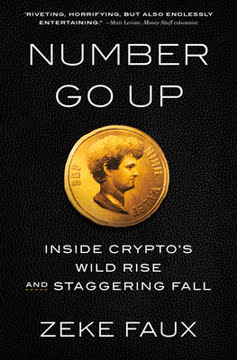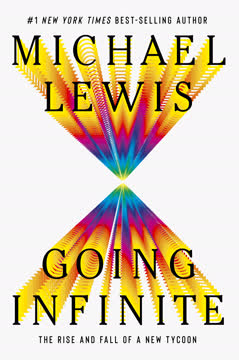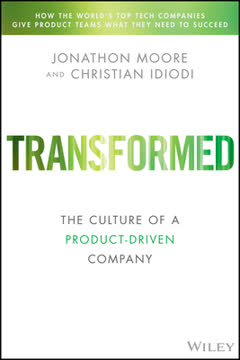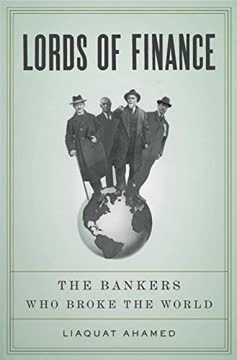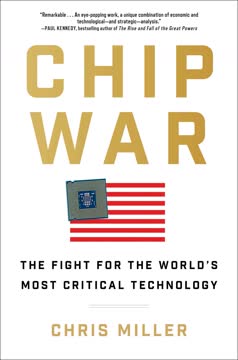نکات کلیدی
1. پول یک داستان مشترک است، نه یک واقعیت ریاضی سرد
پول یک چیز ساختهشده است، یک داستان مشترک. پول اساساً و بهطور غیرقابل تغییر اجتماعی است.
ساختار اجتماعی: پول تنها به این دلیل ارزش دارد که ما بهطور جمعی توافق کردهایم که دارد. بهطور ذاتی مانند غذا یا سرپناه ارزشمند نیست. این باور مشترک به ما اجازه میدهد تا از پول بهعنوان واسطه مبادله، ذخیره ارزش و واحد حساب استفاده کنیم.
تکامل تاریخی: پول در طول تاریخ اشکال مختلفی به خود گرفته است، از صدفهای کاوری و سکههای فلزی تا اسکناسهای کاغذی و ارزهای دیجیتال. هر انتقال نیازمند تغییری در تفکر جمعی درباره آنچه "پول" محسوب میشود، بود.
اعتماد کلیدی است: اثربخشی پول به اعتماد به مرجع صادرکننده (مثلاً دولت، بانک مرکزی) و سیستم اقتصادی گستردهتر بستگی دارد. وقتی اعتماد کاهش مییابد، مانند دوران ابر تورم یا بحرانهای مالی، پول میتواند بهسرعت ارزش درکشده خود را از دست بدهد.
2. منشأ پول پیچیده، خونین و درهمتنیده با روابط انسانی است
ازدواج و قتل بخشی از آن است. همچنین اختراع نوشتن.
فراتر از مبادله: داستان متعارف ظهور پول از مبادله عمدتاً افسانه است. در واقعیت، پول از روابط اجتماعی پیچیده، تعهدات آیینی و سیستمهای اعتبار و بدهی رشد کرد.
اشکال اولیه:
- اقتصادهای هدیه: جوامعی که بر اساس هدیهدهی متقابل و تعهدات ساخته شدهاند
- چوبهای شمارش: ثبت بدهیها از طریق شیارها بر روی چوبهای چوبی
- اقتصادهای معبد: نهادهای مذهبی که فعالیتهای اقتصادی را مدیریت میکنند
نوشتن و حسابداری: اولین اشکال نوشتن برای پیگیری معاملات اقتصادی، بدهیها و موجودیها توسعه یافت. این نشاندهنده ارتباط عمیق بین پول، ثبت سوابق و توسعه تمدن است.
3. پول کاغذی اقتصادها را متحول کرد اما با مقاومت و موانعی روبرو شد
مردم مفهوم را با قرار دادن زباله در صندوقها و تلاش برای بازدهی فاسد کردند.
نوآوری چینی: پول کاغذی ابتدا در چین توسعه یافت و تجارت و گسترش اقتصادی را آسانتر کرد. با این حال، این امر همچنین منجر به دورههای ابر تورم شد زمانی که دولتها بیش از حد چاپ کردند.
پذیرش اروپایی: پول کاغذی در اروپا با شک و تردید مواجه شد اما بهتدریج پذیرفته شد:
- رسیدهای زرگران که به اسکناسها تبدیل شدند
- ایجاد بانکهای مرکزی برای مدیریت ارز کاغذی
- مبارزه با حفظ اعتماد عمومی و جلوگیری از جعل
چرخههای رونق و رکود: توانایی ایجاد پول بهراحتی از طریق ارز کاغذی منجر به رونق اقتصادی شد اما همچنین رکودهای فاجعهباری مانند حباب میسیسیپی در فرانسه را به همراه داشت.
4. سختی استاندارد طلا به فاجعههای اقتصادی کمک کرد
استاندارد طلا کشورها را در یک چرخه اقتصادی وحشتناک قفل کرد. شکستن پیوند با طلا چرخه را شکست.
ثبات درکشده: استاندارد طلا بهعنوان ارائهدهنده ثبات پولی و انضباط در برابر هزینههای بیش از حد دولت دیده میشد. کشورها ارزش ارز خود را به مقدار مشخصی از طلا ثابت کردند.
فشارهای کاهشدهنده: در دوران رکود اقتصادی، استاندارد طلا مانع از گسترش عرضه پول برای تحریک رشد شد و اغلب رکودها را بدتر کرد.
کاتالیزور رکود بزرگ: محدودیتهای استاندارد طلا بهشدت توانایی سیاستگذاران را برای پاسخ به سقوط 1929 محدود کرد و رکود بزرگ را عمیقتر و طولانیتر کرد. کشورهایی که زودتر استاندارد طلا را رها کردند سریعتر بهبود یافتند.
5. بانکهای مرکزی بهعنوان تثبیتکنندههای اقتصادی حیاتی اما بحثبرانگیز ظهور کردند
جوهره مالی سفر در زمان است. پسانداز درباره انتقال منابع از حال به آینده است؛ تأمین مالی درباره انتقال منابع از آینده به حال است.
تکامل نقش:
- از بانکهای خصوصی که به دولتها خدمت میکنند تا نهادهای عمومی که سیاست پولی را مدیریت میکنند
- وامدهندگان آخرین راهحل در بحرانهای مالی
- کنترلکنندگان عرضه پول و نرخ بهره
عملکرد متعادلکننده: بانکهای مرکزی باید فشارهای رقابتی را مدیریت کنند:
- حفظ ثبات قیمت در مقابل ترویج رشد اقتصادی
- استقلال از دخالت سیاسی در مقابل پاسخگویی به عموم
- منافع ملی در مقابل همکاری بینالمللی
انتقادات: بانکهای مرکزی با اتهاماتی مواجه هستند از جمله:
- امکانپذیر کردن هزینههای بیش از حد دولت
- ترجیح دادن نخبگان مالی به شهروندان عادی
- ایجاد چرخههای رونق و رکود از طریق سیاست پولی
6. پیشرفتهای فناوری اشکال جدیدی از پول و ابزارهای مالی ایجاد کرد
بانکداری سایه و پول سایهای که ایجاد کرد، توانست تمام شبکه ایمنی را به دست آورد، پس از دههها بدون پرداخت هیچ هزینهای. پول سایه اکنون پول واقعی بود.
پرداختهای الکترونیکی: ظهور کارتهای اعتباری، بانکداری آنلاین و پرداختهای موبایلی بهطور چشمگیری نحوه استفاده و تفکر ما درباره پول را تغییر داده است.
نوآوری مالی:
- صندوقهای بازار پول: محو کردن خط بین پسانداز و سرمایهگذاری
- مشتقات: ابزارهای مالی پیچیده بر اساس داراییهای پایه
- اوراق بهادارسازی: بستهبندی و فروش مجدد وامها بهعنوان اوراق بهادار قابل معامله
بانکداری سایه: نهادهای مالی غیر بانکی شروع به انجام وظایف مشابه بانکها بدون همان مقررات کردند و به بحران مالی 2008 کمک کردند.
7. بیتکوین و ارزهای دیجیتال چالشهایی برای مفاهیم سنتی پول و بانکداری ایجاد میکنند
نکته بیتکوین این است که هیچکس مسئول نیست. (همچنین میتوانید بگویید که همه مسئول هستند، اما این به همان معناست.)
غیرمتمرکز بودن: بیتکوین بدون یک مرجع مرکزی عمل میکند و از فناوری بلاکچین برای تأیید تراکنشها و ایجاد واحدهای جدید استفاده میکند.
ویژگیهای کلیدی:
- عرضه محدود: تنها 21 میلیون بیتکوین وجود خواهد داشت
- ناشناس بودن: تراکنشها بهصورت عمومی ثبت میشوند اما بدون هویتهای دنیای واقعی
- بدون مرز: میتوان آن را به هر نقطهای از جهان بدون واسطه ارسال کرد
چالشها:
- نوسانات قیمت استفاده از آن بهعنوان یک ارز پایدار را دشوار میکند
- مسائل مقیاسپذیری سرعت تراکنش را محدود میکند
- مصرف انرژی استخراج نگرانیهای زیستمحیطی را ایجاد میکند
8. آینده پول ممکن است شامل ناپدید شدن پول نقد یا اصلاحات رادیکال بانکی باشد
پول نقد در حال مرگ است. بنابراین بیتباکس، ایکش، نتچکس، سایبرکش، نتبیلز و دیجیکش از طریق دفتر ثبت اختراعات و علائم تجاری به بازار میآیند.
جامعه بدون پول نقد: بسیاری از کشورها به سمت پرداختهای دیجیتال حرکت میکنند و برخی (مانند سوئد) تقریباً استفاده از پول نقد را حذف کردهاند.
اصلاحات احتمالی:
- ارزهای دیجیتال بانک مرکزی: پول دیجیتال صادر شده توسط دولت
- بانکداری با ذخیره کامل: جدا کردن ذخیره پول از وظایف وامدهی
- نظریه پولی مدرن: بازنگری در هزینههای دولتی و سیاست پولی
ملاحظات:
- نگرانیهای حریم خصوصی در یک سیستم پولی کاملاً دیجیتال
- شمول مالی برای جمعیت بدون بانک
- تعادل بین نوآوری و ثبات مالی و حفاظت از مصرفکننده
آخرین بهروزرسانی::
FAQ
What's "Money: The True Story of a Made-Up Thing" about?
- Exploration of Money's Nature: The book delves into the concept of money as a social construct, a shared fiction that has evolved over time.
- Historical Perspective: It traces the history of money from ancient barter systems to modern digital currencies, highlighting key transformations.
- Economic and Social Impact: The narrative examines how money has influenced economies, societies, and individual lives throughout history.
- Author's Journey: Jacob Goldstein shares his personal journey of understanding money, inspired by his experiences as a journalist and conversations with experts.
Why should I read "Money: The True Story of a Made-Up Thing"?
- Comprehensive Overview: The book provides a thorough understanding of the evolution of money, making it accessible to readers with varying levels of economic knowledge.
- Engaging Storytelling: Goldstein uses anecdotes and historical stories to make complex economic concepts relatable and interesting.
- Relevance to Modern Times: It connects historical developments to current financial systems, offering insights into contemporary economic issues.
- Thought-Provoking Ideas: The book challenges readers to rethink their perceptions of money and its role in society.
What are the key takeaways of "Money: The True Story of a Made-Up Thing"?
- Money as a Social Construct: Money is not a fixed entity but a shared belief that has changed over time based on societal needs and technological advancements.
- Historical Evolution: From barter to digital currencies, money has undergone significant transformations that reflect broader economic and social changes.
- Role of Trust: Trust is fundamental to the functioning of money, whether in the form of coins, paper, or digital transactions.
- Future of Money: The book suggests that money will continue to evolve, influenced by technological innovations and changing societal values.
How does Jacob Goldstein define money in "Money: The True Story of a Made-Up Thing"?
- Shared Fiction: Goldstein describes money as a shared fiction, a concept that exists because people collectively agree on its value.
- Social and Economic Tool: Money is a tool that facilitates trade, investment, and economic growth, but it is also deeply intertwined with social structures.
- Dynamic and Evolving: Money is not static; it has evolved from physical objects like cowrie shells to digital currencies, adapting to the needs of society.
- Trust-Based System: The value and functionality of money rely heavily on trust among individuals, institutions, and governments.
What are the best quotes from "Money: The True Story of a Made-Up Thing" and what do they mean?
- "Money is fiction": This quote encapsulates the idea that money's value is based on collective belief rather than intrinsic worth.
- "The essence of finance is time travel": This highlights how financial systems allow for the movement of resources across time, enabling investment and growth.
- "Money is fundamentally, unalterably social": It emphasizes that money is deeply connected to human relationships and societal structures.
- "Economic growth and technological change aren’t guaranteed to continue forever": This serves as a cautionary reminder that economic progress is not inevitable and requires careful management.
How does "Money: The True Story of a Made-Up Thing" explain the evolution of money?
- From Barter to Coins: The book starts with the transition from barter systems to the use of coins, which standardized trade and value.
- Introduction of Paper Money: It covers the invention of paper money in China and its eventual adoption in Europe, revolutionizing trade and finance.
- Rise of Banking Systems: The development of banks and the creation of credit systems are explored as pivotal moments in monetary history.
- Digital and Cryptocurrencies: The narrative concludes with the emergence of digital currencies and blockchain technology, highlighting ongoing changes in how money is perceived and used.
What role does trust play in the concept of money according to Jacob Goldstein?
- Foundation of Value: Trust is the foundation upon which the value of money is built; without it, money would lose its meaning and function.
- Facilitates Transactions: Trust allows people to engage in transactions with confidence, knowing that money will be accepted and honored.
- Institutional Trust: Trust in financial institutions and governments is crucial for maintaining stable monetary systems and preventing crises.
- Challenges in Digital Age: The book discusses how trust is being redefined in the digital age, with cryptocurrencies challenging traditional trust-based systems.
How does "Money: The True Story of a Made-Up Thing" address the future of money?
- Technological Influence: The book suggests that technology will continue to shape the future of money, with digital currencies and blockchain playing significant roles.
- Potential for Change: It highlights the potential for radical changes in monetary systems, driven by innovations and shifts in societal values.
- Challenges Ahead: The narrative acknowledges challenges such as privacy concerns, regulatory issues, and the need for new forms of trust.
- Uncertain Trajectory: While the future of money is uncertain, the book emphasizes the importance of understanding its history to navigate upcoming changes.
What historical examples does Jacob Goldstein use to illustrate the evolution of money?
- Mademoiselle Zélie's Concert: An anecdote about a French singer paid in pigs and coconuts illustrates the limitations of barter systems.
- Lydian Coins: The invention of coins in Lydia is used to show the transition from barter to standardized currency.
- Chinese Paper Money: The development of paper money in China highlights a major innovation in the history of money.
- John Law's System: The story of John Law's financial experiments in France serves as an example of early banking and monetary policy.
How does "Money: The True Story of a Made-Up Thing" connect historical monetary systems to modern financial issues?
- Lessons from the Past: The book draws parallels between historical monetary crises and contemporary financial challenges, emphasizing recurring themes.
- Evolution of Banking: It traces the development of banking systems from early goldsmiths to modern central banks, highlighting ongoing issues of trust and regulation.
- Impact of Technology: The narrative connects past innovations like paper money to current developments in digital currencies and blockchain technology.
- Societal Implications: By examining the social and economic impacts of historical monetary systems, the book provides insights into current debates about money and finance.
What insights does Jacob Goldstein offer about digital currencies in "Money: The True Story of a Made-Up Thing"?
- Potential for Disruption: Digital currencies have the potential to disrupt traditional financial systems by offering new forms of money and payment methods.
- Challenges of Adoption: The book discusses the challenges digital currencies face, including regulatory hurdles, security concerns, and the need for widespread acceptance.
- Trust and Decentralization: It explores how digital currencies aim to create trust through decentralized systems, reducing reliance on traditional financial institutions.
- Future Prospects: While acknowledging uncertainties, the book suggests that digital currencies could play a significant role in the future of money, reshaping how transactions are conducted.
How does "Money: The True Story of a Made-Up Thing" challenge traditional views of money?
- Questioning Intrinsic Value: The book challenges the notion that money has intrinsic value, emphasizing its nature as a social construct.
- Rethinking Stability: It questions the stability of traditional monetary systems, highlighting historical instances of failure and crisis.
- Embracing Change: The narrative encourages readers to embrace change and innovation in monetary systems, rather than clinging to outdated models.
- Broader Perspective: By providing a historical and global perspective, the book invites readers to reconsider their assumptions about what money is and how it should function.
نقد و بررسی
کتاب پول: داستان واقعی یک چیز ساختگی به عنوان یک تاریخ جذاب و قابل دسترس از پول و امور مالی تحسین شده است. خوانندگان از سبک محاورهای گلدستین و توانایی او در توضیح مفاهیم پیچیده قدردانی میکنند. این کتاب موضوعاتی از ارزهای باستانی تا ارزهای دیجیتال مدرن را پوشش میدهد و بینشهایی درباره سیاستهای پولی و سیستمهای اقتصادی ارائه میدهد. در حالی که برخی معتقدند که عمق کافی ندارد، بیشتر خوانندگان از رویکرد سرگرمکننده و حکایات تاریخی آن لذت میبرند. منتقدان به سادهسازی بیش از حد و گاهی اوقات جانبداری اشاره میکنند، اما به طور کلی، خوانندگان آن را به عنوان یک مقدمه آموزنده برای موضوع، به ویژه برای کسانی که تازه وارد اقتصاد شدهاند، توصیه میکنند.
Similar Books
